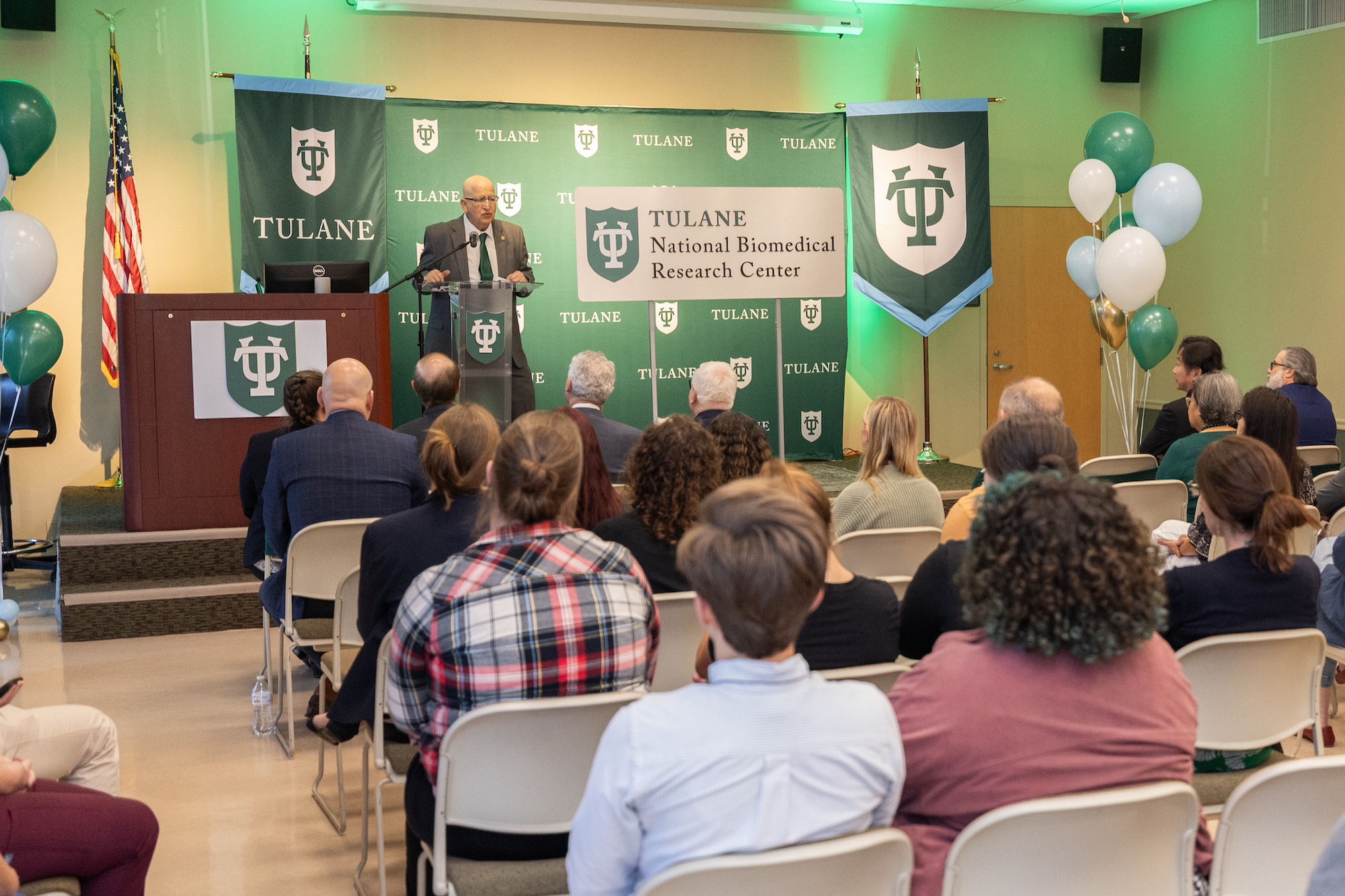Information for
Account Login
Tulane National Primate Research Center adopts new name reflecting broader mission
October 9, 2025Leslie Tate
One of the nation’s longest-running National Institutes of Health-funded research programs has a new name. The Tulane National Primate Research Center will now be known as the Tulane National Biomedical Research Center to better reflect the breadth of research conducted at its Covington, Louisiana, campus as well as its growing contributions to public health.
“For more than six decades, the Tulane National Primate Research Center has played a central role in addressing our nation’s most urgent health challenges and has a well-earned reputation as a global leader in improving human health through the discovery of causes, prevention, treatments and cures,” Tulane President Michael A. Fitts said. “As science has evolved through the decades, so have the scope, scale and approaches of the center. Clearly the center has entered a new and exciting chapter — one that is part of Tulane’s rise in all aspects — and one that requires a new name, as well.”
The center has been funded by the National Institutes of Health since 1964, making it Tulane University’s largest and longest-running NIH grant. It receives about $35 million in annual NIH support, partners with nearly 500 investigators from 155 institutions worldwide, and contributes more than $107 million each year to the Louisiana economy. And, with over 350 employees, the center is one of St. Tammany's largest employers.
The newly named Tulane National Biomedical Research Center houses one of only seven National Primate Research Centers in the country and one of 12 Regional Biocontainment Laboratories, with the distinction of also maintaining a federally regulated Select Agent Program. Together, these programs make the center a cornerstone of the nation’s biomedical research infrastructure and a vital partner in preparing for future health threats. This change also ensures the center is leveraging its advantages and strengths to seek out new partners and continue to expand its research.
Research at the center has advanced understanding of HIV/AIDS, tuberculosis, Lyme disease and other infectious diseases, and revealed important links between infection, chronic illness, aging and neurodegeneration. During public health crises from disease outbreaks to pandemics, its scientists provided rapid insights that informed public health responses and supported the development of vaccines, diagnostics and treatments used worldwide.
The center’s research strategy has evolved as new tools have become available. While nonhuman primates remain central to its mission as the closest relevant model to human health, researchers increasingly rely on advanced non-animal methods that provide early insights and help focus and refine animal studies. These methods include computer modeling, machine-learning and artificial intelligence-guided analysis, lab-grown organ models and organ-on-a-chip systems that replicate the structure and function of human organs. These approaches allow scientists to answer many questions before moving into in-vivo studies and to use fewer animals when they do.
“Nonhuman primates provide the essential bridge between discovery in the lab and safe, effective therapies for people,” said Jay Rappaport, PhD, Tulane National Biomedical Research Center director and chief academic officer. “At the same time, our science has grown beyond primate research alone. Our new name reflects the full spectrum of work we do, our commitment to using animals responsibly and only when needed to generate meaningful results, and the highest standards of scientific integrity that continue to guide everything we do.”
The new name also positions the center for continued growth and deeper collaboration with academic, government and industry partners, reinforcing its role as a national leader in biomedical research and discovery.

